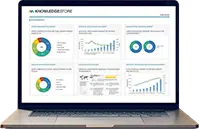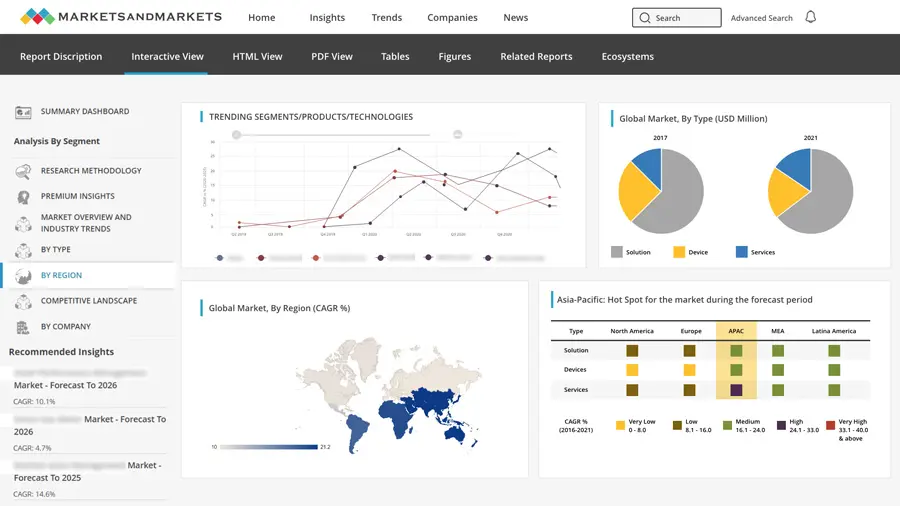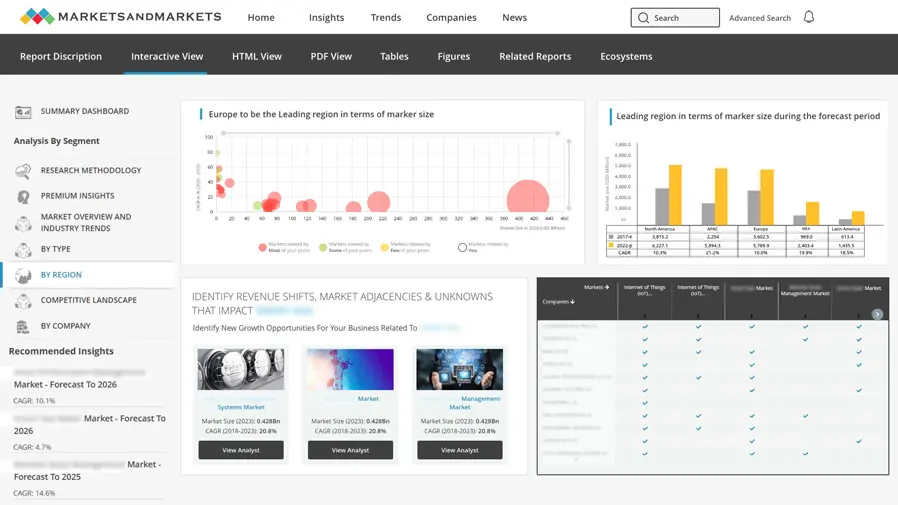Hydrogen Fuel Cell Catalyst Market - Global Forecast to 2030
The hydrogen fuel cell catalyst market is anticipated to grow from USD 0.53 billion in 2024 to USD 1.37 billion by 2030 with a CAGR of 17.1% during 2025–2030. The Hydrogen Fuel Cell Catalyst Market refers to the global industry involved in the development, production, and sale of catalysts used in hydrogen fuel cells. These catalysts are critical components that facilitate the electrochemical reactions within the fuel cells, enabling the conversion of hydrogen and oxygen into electricity, with water and heat as byproducts.
The hydrogen fuel cell catalyst market is segmented into Platinum-based, Nickel-based, and Carbon-based catalysts, each addressing distinct needs. Platinum-based catalysts lead the market of proton exchange membrane fuel cells due to the high efficiency and stability that they show for the reactions taking place in the fuel cell, but their high cost pushes research in lowering their usage. The research into Nickel-based catalysts is promising as it offers a cheaper alternative, especially for alkaline fuel cells. Nickel-based catalysts have and continue to face issues in durability and performance. Carbon-based catalysts are the lowest in cost and the most sustainable and are expected to be at least somewhat doped to get higher activity, and are not efficient enough when prior to any doping agents, which is why they have and will continue to be the research and development focus, which fundamentally will lend towards their efficacy for use in wide-spread application. All of these segments strike balances between performance, cost, and sustainability which will push the technology of fuel cells forward.
The hydrogen fuel cell catalyst market, segmented by fuel cell type, includes Proton Exchange Membrane Fuel Cell (PEMFC), Solid Oxide Fuel Cell (SOFC), Phosphoric Acid Fuel Cell (PAFC), and Alkaline Fuel Cell (AFC), each with distinct catalyst demands. PEM fuel cells (PEMFCs) are the most widely used type, especially in cars and portable devices, thanks to their high efficiency. But they rely on expensive platinum-based catalysts, which has sparked a lot of research aimed at cutting down the amount of platinum needed. Solid oxide fuel cells (SOFCs), mainly used for stationary power, operate at high temperatures and use more affordable materials like nickel or ceramic-based catalysts. These are built for durability and long-term use. Phosphoric acid fuel cells (PAFCs) are also used for stationary applications and rely on platinum too, but their stability in acidic conditions makes them reliable—though there's an ongoing push to bring costs down. Alkaline fuel cells (AFCs), on the other hand, use cheaper nickel or carbon-based catalysts and work well in alkaline environments. They’re typically used in niche areas like space missions or military tech, where improving their performance is a key focus.
The hydrogen fuel cell catalyst market, segmented by end-use application, includes Portable, Stationary, and Fuel Cell Vehicle (FCV) applications, each with unique catalyst requirements. Portable fuel cell applications such as the fuel cells in drones and laptops have portable, platinum-based catalysts in PEMFCs, and the whole ethos here is miniature and efficiency. The goal here is compactness because these applications are still in niche markets, and there is pressure to reduce cost. Stationary applications, such as building power or grid backup, present a much more complicated picture. Depending on the type of fuel cell, platinum is still used (PEMFC, PAFC), but affordable alternatives like nickel and ceramics (in SOFCs) are favored. Durability and cost are prioritized for these stationary applications. Fuel cell vehicles (FCVs), which represent the largest segment of the market, are like portable applications using PEMFCs containing platinum catalysts to achieve high automotive performance and, therefore, like in the portable applications, there is research and development being conducted on reducing the amount of platinum required or finding an affordable alternative such as carbon-based catalysts. All segments in the fuel cell market come together with a multitude of priorities ranging from portable to lifespan to mass adoption.
By Region, the hydrogen fuel cell catalyst market is segregated into North America, Asia Pacific, Europe, and Rest of the World. Due to strong governmental support, increased green mobility investments, and rapid FCEV infrastructure growth, the Asia Pacific region is leading in the hydrogen fuel cell catalyst demand. Nations such as Japan and South Korea are leading the charge with national roadmaps to deploy hydrogen technologies at scale. Japan’s Green Growth Strategy, one example, aims to develop high performance low-cost catalysts to lower dependence on platinum-based materials. In North America, investment growth in clean energy and public-private collaboration are realizing more widespread fuel cell technology adoption, especially in the transportation and industrial sectors.
A few of the players operating in the hydrogen fuel cell catalyst market include Umicore (China), Johnson Matthey (London), 3M (Maplewood), CATALER CORPORATION (Japan), Clariant (Switzerland) among others.
Key Questions Addressed by the Report
Frequently Asked Questions (FAQs)
- What is the current size of the hydrogen fuel cell catalyst Market?
- What trends could be witnessed over the next five to ten years?
- What are the major drivers for the hydrogen fuel cell catalyst Market?
- Which is the largest segment by application during the forecasted period in the hydrogen fuel cell catalyst Market?
- Which is the fastest-growing region during the forecasted period in the hydrogen fuel cell catalyst Market?
- What will be the revenue pockets for the hydrogen fuel cell catalyst Market in the next five years?

1 INTRODUCTION
1.1 OBJECTIVE OF THE STUDY
1.2 MARKET DEFINITION
1.2.1 INCLUSIONS AND EXCLUSIONS
1.3 MARKET SCOPE
1.3.1 MARKET SEGMENTATION
1.3.2 REGIONAL SCOPE
1.4 YEARS CONSIDERED
1.5 CURRENCY
1.6 LIMITATIONS
1.7 STAKEHOLDERS
2 RESEARCH METHODOLOGY
2.1 RESEARCH DATA
2.2 MARKET BREAKDOWN AND DATA TRIANGULATION
2.2.1 SECONDARY DATA
2.2.1.1 KEY DATA FROM SECONDARY SOURCES
2.2.2 PRIMARY DATA
2.2.2.1 KEY DATA FROM PRIMARY SOURCES
2.2.2.2 KEY INDUSTRY INSIGHTS
2.2.2.3 BREAKDOWN OF PRIMARY INTERVIEWS
2.3 MARKET SIZE ESTIMATION
2.3.1 BOTTOM-UP APPROACH
2.3.2 TOP-DOWN APPROACH
2.3.3 DEMAND SIDE ANALYSIS
2.3.3.1 ASSUMPTIONS FOR DEMAND SIDE ANALYSIS
2.3.3.2 DEMAND SIDE CALCULATION
2.3.4 SUPPLY SIDE ANALYSIS
2.3.4.1 ASSUMPTIONS FOR SUPPLY SIDE ANALYSIS
2.3.4.2 SUPPLY SIDE CALCULATION
2.4 FORECAST
3 EXECUTIVE SUMMARY
4 PREMIUM INSIGHTS
5 MARKET OVERVIEW
5.1 INTRODUCTION
5.2 MARKET DYNAMICS
5.2.1 DRIVERS
5.2.2 RESTRAINTS
5.2.3 OPPORTUNITIES
5.2.4 CHALLENGES
5.3 TRENDS/DISRUPTIONS IMPACTING CUSTOMERS’ BUSINESS
5.4 SUPPLY/VALUE CHAIN ANALYSIS
5.5 ECOSYSTEM
5.6 CASE STUDY ANALYSIS
5.7 PATENT ANALYSIS
5.8 PRICING ANALYSIS
5.9 UPCOMING TRENDS AND RESEARCH IN CATALYST
5.9.1 PALLADIUM BASED CATALYST
5.9.2 PERVOSKITE CATALYST
5.10 KEY CONFERENCES & EVENTS IN 2024–2025
5.11 REGULATORY LANDSCAPE
5.11.1 REGULATORY BODIES, GOVERNMENT AGENCIES, AND OTHER ORGANIZATIONS
5.11.2 REGULATORY FRAMEWORK
5.12 PORTER’S FIVE FORCES ANALYSIS
5.13 KEY STAKEHOLDERS AND BUYING CRITERIA
5.13.1 KEY STAKEHOLDERS IN BUYING PROCESS
5.13.2 BUYING CRITERIA
6 HYDROGEN FUEL CELL CATALYSTS MARKET, BY CATALYST TYPE
(VALUE (USD MILLION) – 2020, 2021, 2022, 2023, 2024, 2025 – 2030)
6.1 INTRODUCTION
6.2 PLATINUM-BASED CATALYSTS
6.2.1 PLATINUM
6.2.2 PLATINUM ALLOYS
6.3 NICKEL-BASED CATALYSTS
6.4 CARBON-BASED CATALYSTS
6.5 OTHER CATALYSTS
7 HYDROGEN FUEL CELL CATALYSTS MARKET, BY FUEL CELL TYPE
(VALUE (USD MILLION) - 2020, 2021, 2022, 2023, 2024, 2025 – 2030)
7.1 INTRODUCTION
7.2 PROTON EXCHANGE MEMBRANE FUEL CELL (PEMFC)
7.3 SOLID OXIDE FUEL CELL (SOFC)
7.4 PHOSPHORIC ACID FUEL CELL (PAFC)
7.5 ALKALINE FUEL CELL (AFC)
8 HYDROGEN FUEL CELL CATALYSTS MARKET, BY END-USE APPLICATION
(VALUE (USD MILLION) - 2020, 2021, 2022, 2023, 2024, 2025 – 2030)
8.1 INTRODUCTION
8.2 PORTABLE
8.3 STATIONARY
8.4 FUEL CELL VEHICLE
9 HYDROGEN FUEL CELL CATALYSTS MARKET, BY REGION
(VALUE (USD MILLION) - 2020, 2021, 2022, 2023, 2024, 2025 – 2030)
9.1 INTRODUCTION
9.2 ASIA PACIFIC
9.2.1 BY CATALYSTS TYPE
9.2.2 BY FUEL CELL TYPE
9.2.3 BY END-USE APPLICATION
9.2.4 BY COUNTRY
9.2.4.1 CHINA
9.2.4.1.1 BY FUEL CELL TYPE
9.2.4.2 JAPAN
9.2.4.3 SOUTH KOREA
9.2.4.4 REST OF ASIA PACIFIC
9.3 NORTH AMERICA
9.3.1 BY CATALYSTS TYPE
9.3.2 BY FUEL CELL TYPE
9.3.3 BY END-USE APPLICATION
9.3.4 BY COUNTRY
9.3.4.1 US
9.3.4.1.1 BY FUEL CELL TYPE
9.3.4.2 CANADA
9.4 EUROPE
9.4.1 BY CATALYSTS TYPE
9.4.2 BY FUEL CELL TYPE
9.4.3 BY END-USE APPLICATION
9.4.4 BY COUNTRY
9.4.4.1 GERMANY
9.4.4.1.1 BY FUEL CELL TYPE
9.4.4.2 UK
9.4.4.3 FRANCE
9.4.4.4 ITALY
9.4.4.5 REST OF EUROPE
9.5 ROW
9.5.1 BY CATALYSTS TYPE
9.5.2 BY FUEL CELL TYPE
9.5.3 BY END-USE APPLICATION
9.5.4 BY REGION
9.5.4.1 MIDDLE EAST & AFRICA
9.5.4.1.1 BY BY FUEL CELL TYPE
9.5.4.2 SOUTH AMERICA
10 COMPETITIVE LANDSCAPE
10.1 KEY PLAYER STRATEGIES OVERVIEW
10.2 MARKET EVALUATION FRAMEWORK
10.3 MARKET SHARE ANALYSIS OF KEY PLAYERS, 2024
10.4 REVENUE ANALYSIS, 2020-2024
10.5 COMPANY EVALUATION MATRIX: KEY PLAYERS, 2024
10.5.1 STARS
10.5.2 EMERGING LEADERS
10.5.3 PERVASIVE PLAYERS
10.5.4 PARTICIPANTS
10.5.5 COMPANY FOOTPRINT: KEY PLAYERS, 2024
10.5.5.1 Company Footprint
10.5.5.2 Region Footprint
10.5.5.3 Catalyst Type Footprint
10.5.5.4 Fuel Cell Footprint
10.5.5.5 End-use Application Footprint
10.6 COMPETITIVE SCENARIO AND TRENDS
11 COMPANY PROFILES
11.1 UMICORE
11.1.1 BUSINESS OVERVIEW
11.1.2 PRODUCTS & SERVICES
11.1.3 RECENT DEVELOPMENTS
11.1.4 MNM VIEW
11.1.4.1 Key strategies/right to win
11.1.4.2 Strategic choices made
11.1.4.3 Weaknesses/competitive threats
11.2 JOHNSON MATTHEY
11.3 3M
11.4 CATALER CORPORATION
11.5 CLARIANT
11.6 HERAEUS
11.7 TANAKA PRECIOUS METALS
11.8 FUELCELLSETC
11.9 PAJARITO POWDER
11.10 TECHNICAL FIBRE PRODUCTS (TFP)
11.11 ENY-MOBILITY GMBH
11.12 GENPORT SRL
11.13 JAMES CROPPER
12 APPENDIX
12.1 INSIGHTS OF INDUSTRY EXPERTS
12.2 DISCUSSION GUIDE
12.3 KNOWLEDGESTORE: MARKETSANDMARKETS’ SUBSCRIPTION PORTAL
12.4 CUSTOMIZATION OPTIONS
12.5 RELATED REPORTS
12.6 AUTHOR DETAILS
















Growth opportunities and latent adjacency in Hydrogen Fuel Cell Catalyst Market